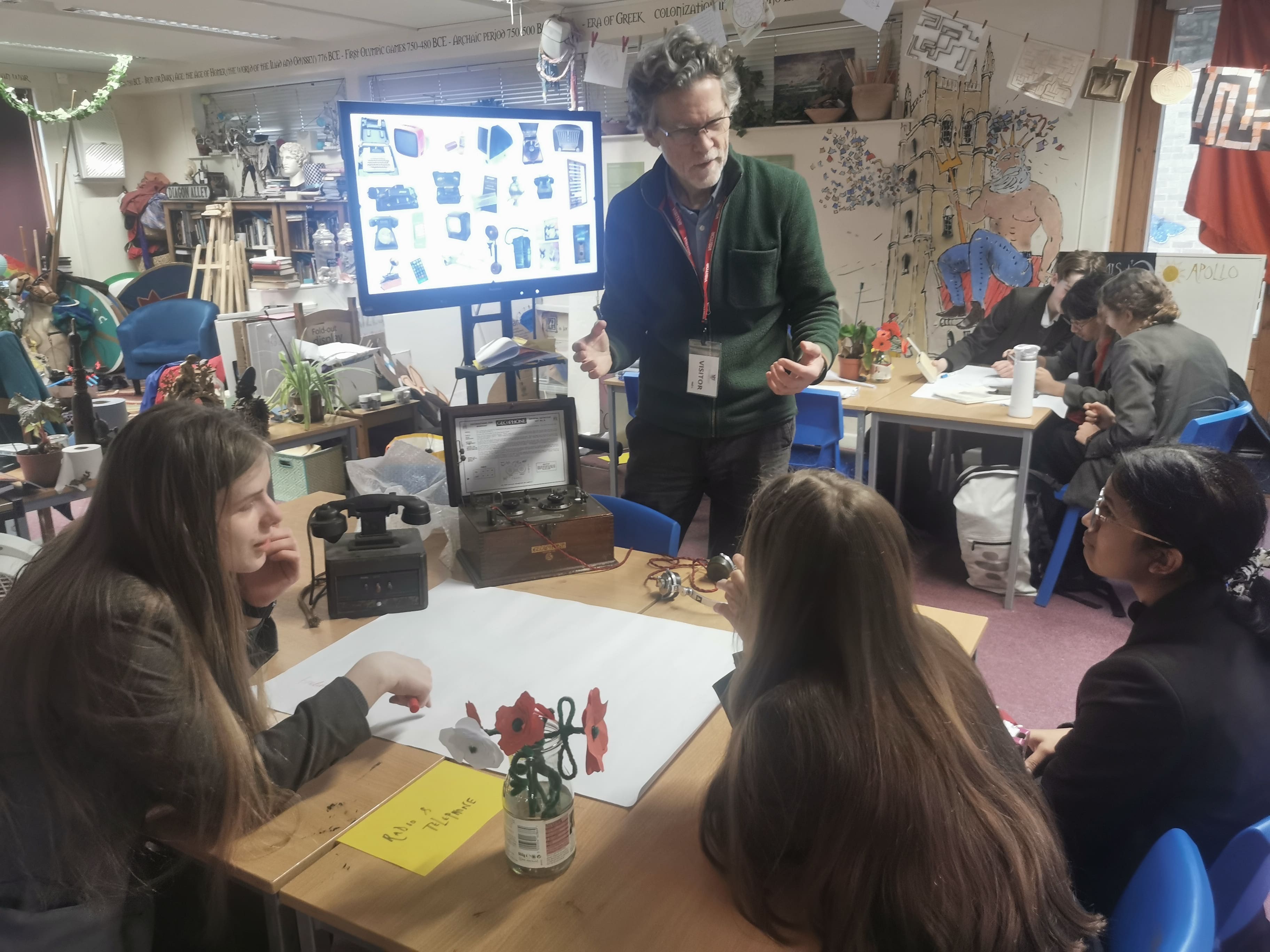Forbidden Forest of Fiction Mural

Over many years, the Rumble Museum has accumulated a collection of fantasy and speculative fiction early editions. These have been displayed in cabinets around the site, but the recent refurbishment of the Library led to the need to take down all the cabinets and an original Rumble Museum vinyl. Rather than simply replace everything, we decided to create a striking forest mural featuring characters and objects from our fiction collection.
The initial mural idea, conceived by Rumble Director, Dr Lorna Robinson, was a black and white forest, like an illustration in an old-fashioned fairy tale book, filled with objects and characters which would be in colour. The idea has now been turned into a highly detailed, vivid and striking design by Milton Keynes-based artist and designer Luke McDonnell. Luke worked intensively over the school's half term week to create a stunning work of art. He created a mysterious wrap-around effect, to reflect the idea of the forest creeping round corners, and used pen and ink to render an intricate, book illustration effect on a huge scale.
 Over the past few months, we have been organising a unique and exciting project to convert two units of old school lockers into museum display cabinets for our forthcoming 100 Years of Toys & Games Exhibition.
Over the past few months, we have been organising a unique and exciting project to convert two units of old school lockers into museum display cabinets for our forthcoming 100 Years of Toys & Games Exhibition. Museum Students in Year Eleven and Twelve at Cheney School in east Oxford were very excited to be taking part in a collaborative project involving the forthcoming exhibition
Museum Students in Year Eleven and Twelve at Cheney School in east Oxford were very excited to be taking part in a collaborative project involving the forthcoming exhibition  The Rumble Museum at Cheney School is excited to be working with the History of Science Museum on an exciting project to create some new technology displays in our new cabinets on the first floor of their Lane Building.
The Rumble Museum at Cheney School is excited to be working with the History of Science Museum on an exciting project to create some new technology displays in our new cabinets on the first floor of their Lane Building. The Museum of Climate Hope project is an exciting new project led by
The Museum of Climate Hope project is an exciting new project led by 
 We are delighted to announce that the Rumble Museum has been awarded a Wild Escape grant for an exciting project engaging primary school children with our natural history collections.
We are delighted to announce that the Rumble Museum has been awarded a Wild Escape grant for an exciting project engaging primary school children with our natural history collections.

 We are delighted to have received a grant from the National Lottery Heritage Fund for a project developing displays and workshops using our African Artefacts Collection.
We are delighted to have received a grant from the National Lottery Heritage Fund for a project developing displays and workshops using our African Artefacts Collection.
